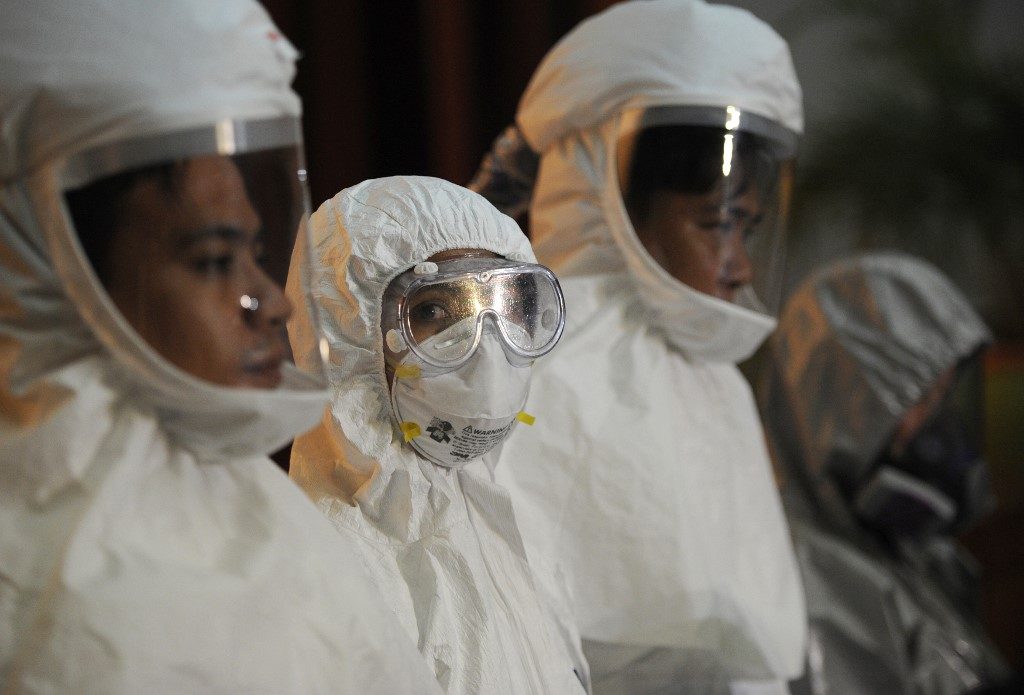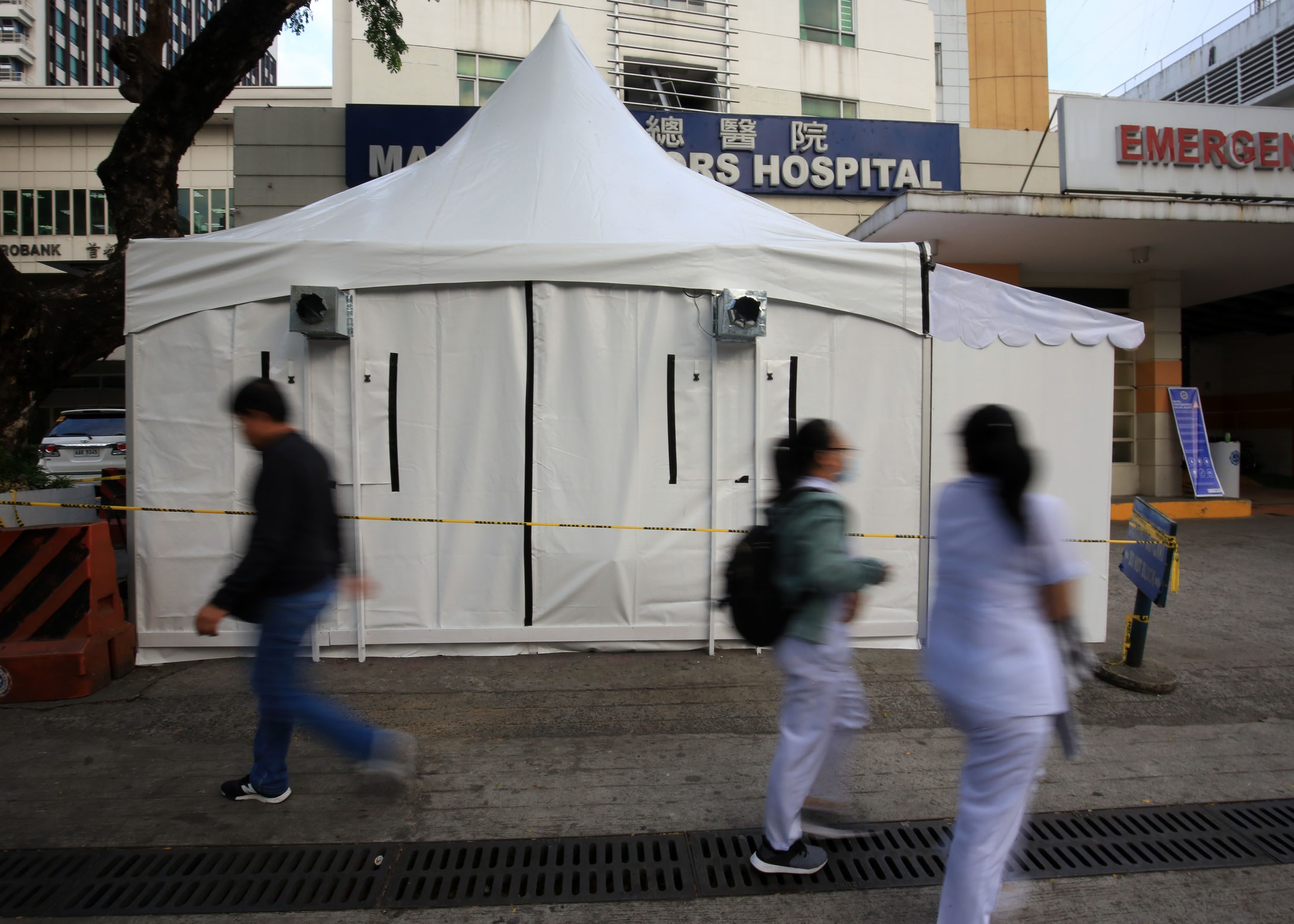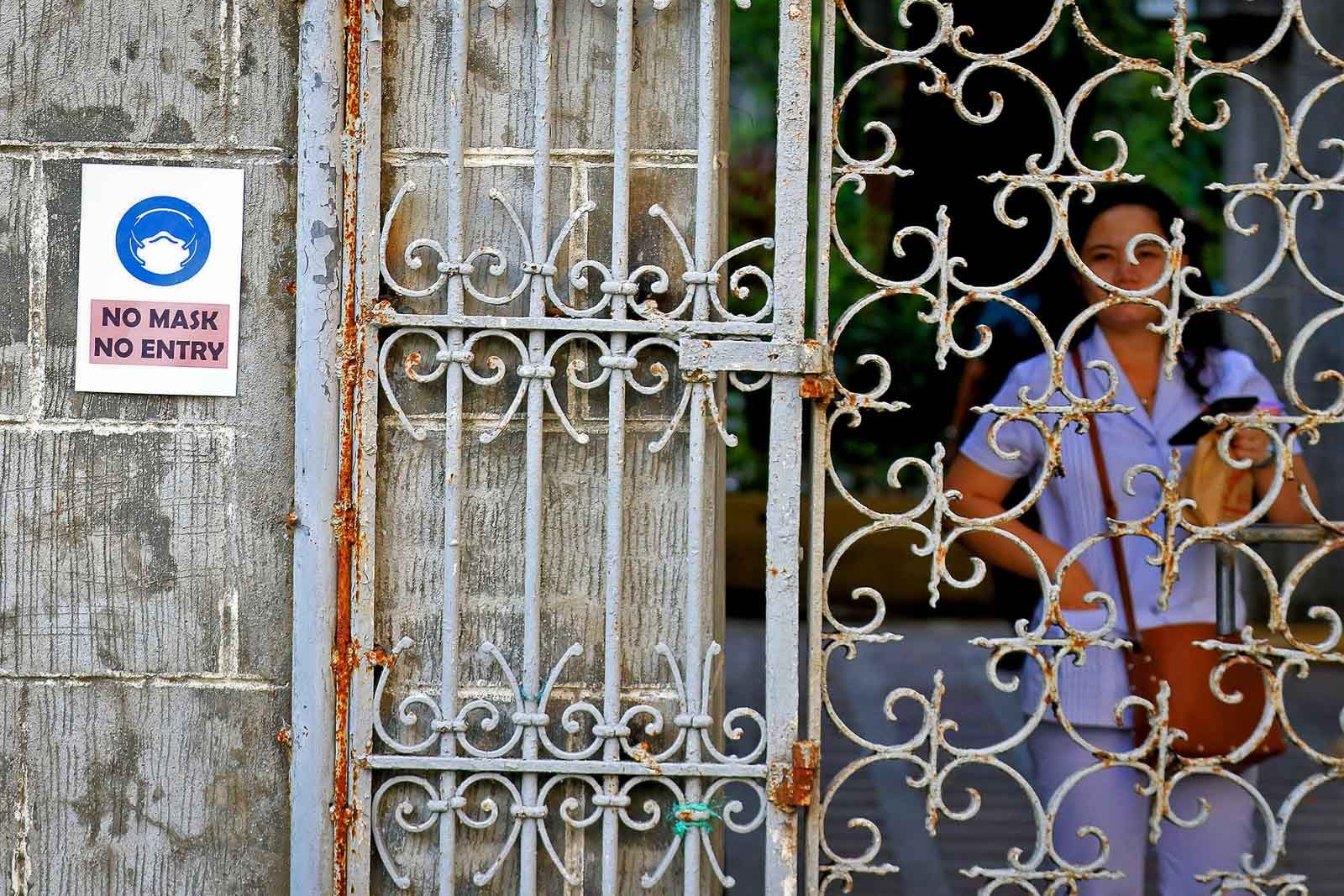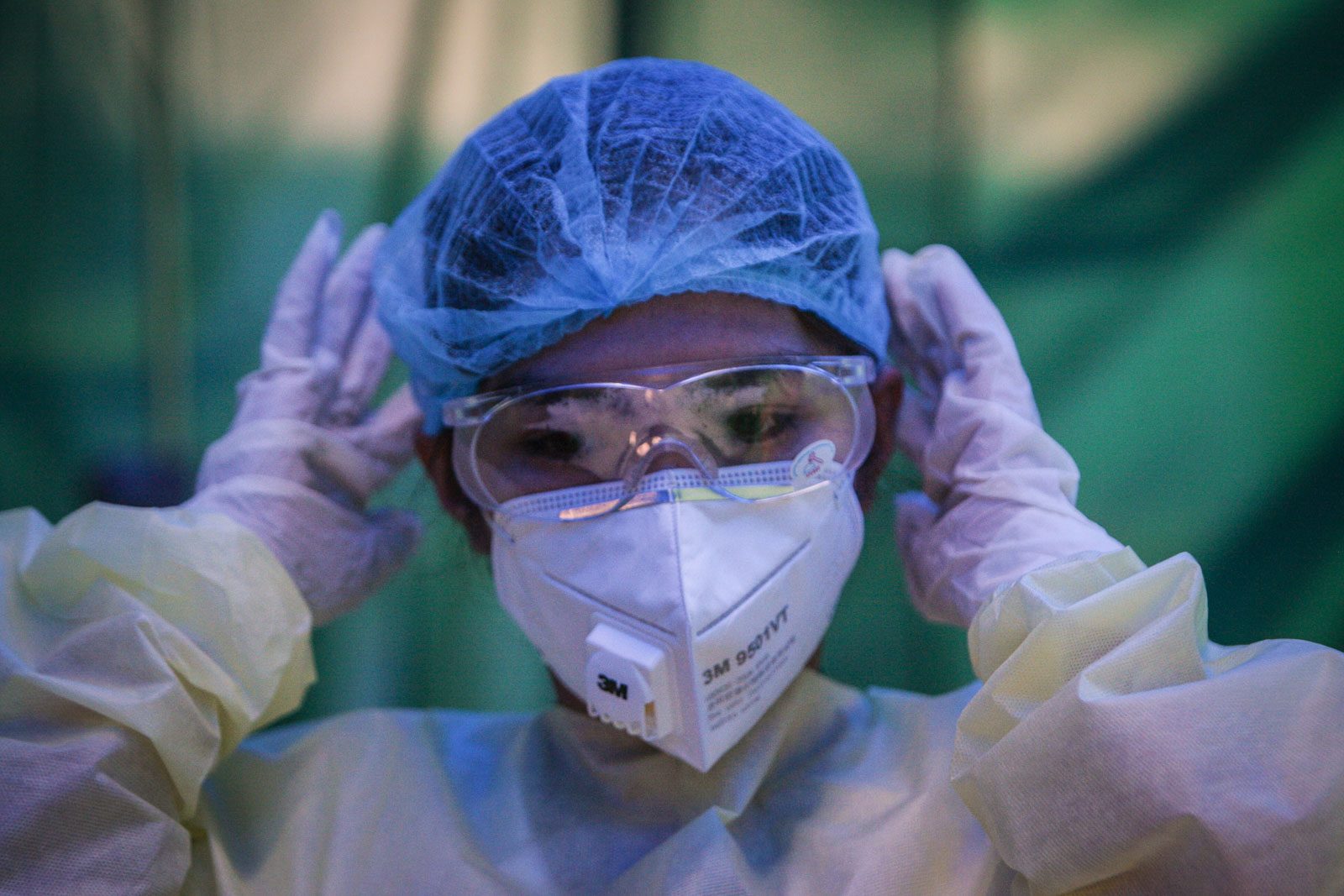SUMMARY
This is AI generated summarization, which may have errors. For context, always refer to the full article.

MANILA, Philippines – When 33-year-old Lauren Gutierrez* got a call from her boss that all healthy hands would have to be on deck as COVID-19 cases surged in the Philippines, she couldn’t immediately leave.
She could head out of her apartment in Manila only after two weeks. She was in a mandatory quarantine after having been exposed to a patient positive for COVID-19, the disease caused by the novel coronavirus.
The infected patient she was exposed to was a fellow doctor.
“I can’t even go back to the province to be with my mother as I might compromise her health,” she told Rappler in a phone interview.
Gutierrez was in her hometown in Laguna on March 5 when she learned that her colleague tested positive for COVID-19. Immediately, she donned an N95 mask and told her mother, “Do not come near me.”
The mother and daughter started eating separately. No hugs, no kisses, no shared tables. This was Gutierrez’s best way of showing love to her mother – by ensuring that she didn’t contract the virus.
“We had to practice distancing inside the house. We couldn’t even eat on the same table. It was sad, but that’s the best that we could do,” she said.
The following day, Gutierrez rushed back to her apartment in Manila so she could go through the mandatory home quarantine.
No peace of mind
Gutierrez has so far not displayed any signs that she has caught the virus. Knowing, however, that a carrier could be asymptomatic, and that the virus can live in the body longer than 14 days, her concern before going back to work had shifted from her mother to her cancer patients.
“Am I putting people at risk?” she asked.
Like Gutierrez, Dr Denton Syjuco*, an aspiring cardiologist, lacks peace of mind.
The two of them work for different “specialty” government medical centers in Quezon City that deal with high-risk patients – those who have kidney and heart problems. In an ideal world, these two specialty hospitals shouldn’t be accepting COVID-19 cases because doing so could compromise the weak immune system of their other patients.
“COVID is highly contagious. As a doctor [attending to patients with comorbid cases], it makes me feel anxious. It’s slightly depressing to even think that we might be carriers already and don’t even know it,” Syjuco said.
“It really affects your peace of mind,” Syjuco added. “I always wonder if I am exposing my patients to the virus.”

No ‘VIP tests’ for health workers
Gutierrez and Syjuco’s dilemma could have been avoided had the government implemented mass testing for possible COVID-19 cases, especially for health workers, who are on the front line.
The Department of Health (DOH) has rejected growing calls to conduct mass testing, saying it’s not needed at this time. Testing patients for the virus has been a major problem since the start of the outbreak because the Philippines has a population of 109 million.
The DOH on March 21 said the country’s accredited testing centers so far only have an average testing capacity of up to 1,000 per day. (IN CHARTS: PH lags behind other countries in COVID-19 testing)
Yet, amid the shortage of test kits, government officials have been announcing on social media that they were tested for the coronavirus, and their results were made known to them by no less than Health Secretary Francisco Duque III. Senator Miguel Zubiri, for example, said Duque called him to deliver the good news, while Senator Nancy Binay said Duque confirmed to her that her results turned out to be negative.
For sure, more tests given to wider segments of the population that more urgently need them would have better prepared the frontliners like Gutierrez for the onslaught of the disease. As it is, they were partly blind, unable to see early on the full viciousness of their enemy.
Crippling the health care system
Gutierrez said having doctors under quarantine further “cripples” the Philippine health care system, which has a doctor-patient ratio of 1:33,000.
To undergo laboratory testing would give her peace of mind, but the “algorithm,” she said, would not permit it. (READ: When should you get tested for coronavirus?)
“They said they will develop a program that would allow mass testing for health workers. Until then, I cannot do anything because I cannot be tested, based on the algorithm,” she said.
On March 13, the DOH announced that 39 doctors, nurses, and hospital staff of the Philippine Heart Center were in quarantine after being exposed to COVID-19 Patient 37, who died on March 12.
By March 20, eleven hospitals sounded the alarm bells and appealed to the government to designate centers for coronavirus cases. The hospitals said a big number of frontline workers had been placed in quarantine or had been infected by the virus while the number of COVID-19 patients flocking to hospitals continued to balloon.
As of Tuesday night, March 24, the DOH tracker showed there were 615 patients under investigation (PUIs).
“The panic is escalating, mortality is increasing, our supplies of personal protective equipment (PPE) are running short, our frontline staff are increasingly getting depleted as more of them are quarantined or physically and emotionally exhausted, and a number of our medical colleagues are already hooked to respirators fighting for their lives in various ICUs. Even our ICUs are getting full,” the hospital doctors said in their statement.
“Soon we will have a shortage of respirators. We have every reason to be scared; we are, indeed, very scared because we feel that we are on our own to face our countrymen in dire need of help,” the statement added.
As of early morning of March 25, the number of patients infected with coronavirus stood at 552. The death toll rose to 35 while the number of patients who recovered climbed to 20.
San Lazaro Hospital in Manila and the Lung Center of the Philippines in Quezon City are two of the government hospitals that patients from Metro Manila and nearby provinces have been flocking to. It was in San Lazaro where the first cases were confined.
But the numbers of infected continue to surge, pushing hospitals beyond their capacity. So far, there are at least 19 confirmed cases admitted in each of the two hospitals.
In the past few days, at least 3 big private hospitals – Medical City in Pasig and St Luke’s in Quezon City and Taguig – said they were overcapacity and could no longer take in coronavirus patients.
Responding to the lack of facilities, the specialty government hospitals that Gutierrez and Syjuco work for set up triage tents to accommodate more COVID-19 cases.
To protect the lives of patients whose immune systems are compromised, these hospitals have imposed stricter measures to control the flow of people in their facilities.
A staff working at Gutierrez’s hospital told Rappler they have minimized face-to-face transactions, too. The hospital also encourages patients to make queries over the phone or online, and visitors are restricted to the lobby. As a safer alternative for their doctors and health workers, walk-in patients are given survey forms to inform the staff about their concerns.
“We are worried for our high-risk patients. We really have to protect them, especially those who underwent transplant operations,” the hospital staff said.
In Syjuco’s workplace, those who wish to be checked for the coronavirus are entertained at the triage tents. But “only those who really look sick” could stay for testing, Syjuco said.
Those who do not show symptoms are asked to stay home for 14 days. During this period, Gutierrez said, “it’s okay” to take anti-flu medicines. She said, “Some doctors prescribe antibiotics, depending on their assessment.” But patients are advised to immediately go back to the hospital if they feel their cough is progressing or if they are starting to have difficulty breathing.
Aside from the country’s limited testing capacity, the shortage in medical supplies has added to the frontliners’ burden. Most hospitals have insufficient PPEs, have run out of surgical and N95 masks, and even alcohol, compelling them to resort to begging for donations.
“The facilities are not enough. We don’t have enough supplies. We don’t even have trainings,” lamented Gutierrez.

These specialty hospitals are strictly implementing skeleton staffing to make sure that more doctors could go on duty but have less exposure to the virus. This means only doctors “on duty” could go to work.
Prior to the crisis, Syjuco and Gutierrez reported for work daily to practice and supervise cases even if they were not on duty.
“Skeleton staffing also ensures that the limited [protective equipment] would be enough for those on duty,” Syjuco said.
Both doctors do not have figures pertaining to the number of available PPEs in their hospitals. But they have occasionally run out of N95 masks. Donations, which Syjuco described as “paisa-isa” (piecemeal), help augment the centers’ daily needs.
In Gutierrez’s case, there had been times when she had to use her mask twice, although ideally doctors should use one mask per day.
On government response
President Rodrigo Duterte’s speeches detailing the supposed government’s response to the outbreak did not allay their fears either. These only added to their confusion.
Gutierrez lamented that, in the middle of a health crisis, Duterte’s immediate solution was police power instead of beefing up medical facilities and supporting medical workers.
“The soldiers and policemen on the streets do not even have the proper protective gear. This makes them vulnerable to the virus,” she said.
She also criticized the manner by which the government implemented the lockdown because it only allowed the people “who are possibly infected with coronavirus” to leave Metro Manila and spread disease to other regions.
Should infections spread to more provinces, Gutierrez and Syjuco fear that hospitals there would be incapable of efficiently coping with the problem.
Syjuco said anyone who understands the country’s health care situation knows that “we cannot afford a full-blown crisis.”
The DOH has said that 5 subnational laboratories in the following government hospitals can do the requisite coronavirus tests – besides the Research Institute for Tropical Medicine (RITM). These are the Lung Center, San Lazaro Hospital, Baguio General Hospital and Medical Center in Luzon, the Vicente Sotto Memorial Medical Center in the Visayas, and Southern Philippines Medical Center in Mindanao.
‘Not ending soon’
The seeming lack of a coherent plan for the lockdown added to Syjuco’s growing psychological concern. With the community quarantine in place, his next problem was how to commute to work.
“I get frustrated. My frustration does not come from the side of the hospital but from what I see outside. It’s quite depressing because [community] quarantine is really important to stop the spread of the disease. But some of us do not have a choice. We need to work,” Syjuco said.
At night, Syjuco goes home filled with paranoia. “Since I only commute, my worry is that I might catch the virus and pass it on to my patients.”
“We [health workers] all suffer from anxiety. Even if we’re wearing masks and we don’t have symptoms, there’s no way for us to tell if we’re really safe. My peace of mind is really affected,” he said.

Outside the hospital and during their breaks, Syjuco said doctors “avoid” discussing issues related to the virus. He said the COVID-19 issue is already “too heavy” and they need to find ways to “unburden” themselves.
“We try not to talk about it as much as possible. We try to balance things. We treat our patients in the hospital but outside we talk about simple things to lighten things up,” he said.
Despite this, Syjuco said that crisis is “not…ending anytime soon.” But it the middle of fear and confusion, Syjuco and Gutierrez get consolation from the strong support coming from citizens who have been donating food, protective equipment, and opening their doors to the frontliners.
The gush of words of gratitude hailing health workers as heroes in the battle against coronavirus uplift their troubled spirits, too, and boost their morale.
“May naaawa sa amin (Some people sympathize with us)” Gutierrez said. “It gives me hope. There are still good people in the world who are concerned about us.” – Rappler.com
*The names of doctors and staff have been changed upon their request. They agreed to be interviewed on condition of anonymity.
Add a comment
How does this make you feel?
There are no comments yet. Add your comment to start the conversation.